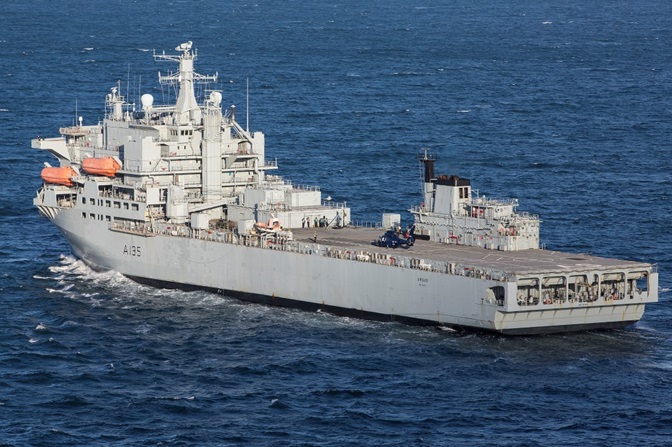Royal Navy Support Ships
Only two of these AOR (Auxiliary Oiler, Replenishment) of a planed six were built. They are of an equivalent size to some of the large American oilers but more modern and fitted out for a variety of tasks. Even though these are RFA (Royal Fleet Auxiliary) ships, they are armed, equipped with fairly sophisticated electronics and decoys and can house up to five helicopters. With a storage capacity exceeding 12,500 m3 for liquids and 6250 m3 of dry goods, refrigerated food and ammunition, one of the Fort class can supply a task group for several days of intense operations by conducting Replenishment at Sea (RAS). Operationally this was a major improvement as the AOR replaced three other ships; an Oiler (AO), a stores ship (AFS) and an ammunition replenishment ship (AFS or AE). These ships were both commissioned in 1993 because Fort Victory was bombed by the Irish Republican Army while under construction and nearly sunk. Repairs (although quicker then historic) delayed her commissioning by 18 months.
| Pennant | Name | Status | Location |
|---|---|---|---|
| A387 | RFA Fort Victoria | Active in Indian Ocean | Arabian Sea supporting Ark Royal |
| A388 | RFA Fort George | Active | Portsmouth |
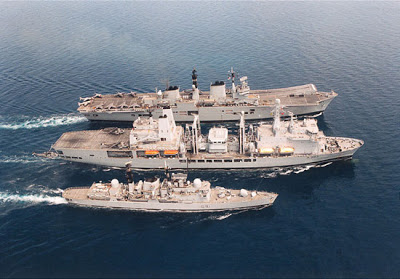
Built in the ‘70’s these two ships are half the size of the Fort Victoria and designed to replenish dry goods only, they are classified AFS (Auxiliary, Fleet Stores) or Combat Stores Ship carrying 3,500 tons of stores including refrigerated goods. With large flight deck, an emergency landing deck on top of the hanger and the ability to house four Sea King helicopters they are often used for aviation training as a secondary task.
| Pennant | Name | Status | Location |
|---|---|---|---|
| A385 | RFA Fort Grange | Active in Med | Western Med supporting Illustrious |
| A386 | RFA Fort Austin | Active | Portsmouth |
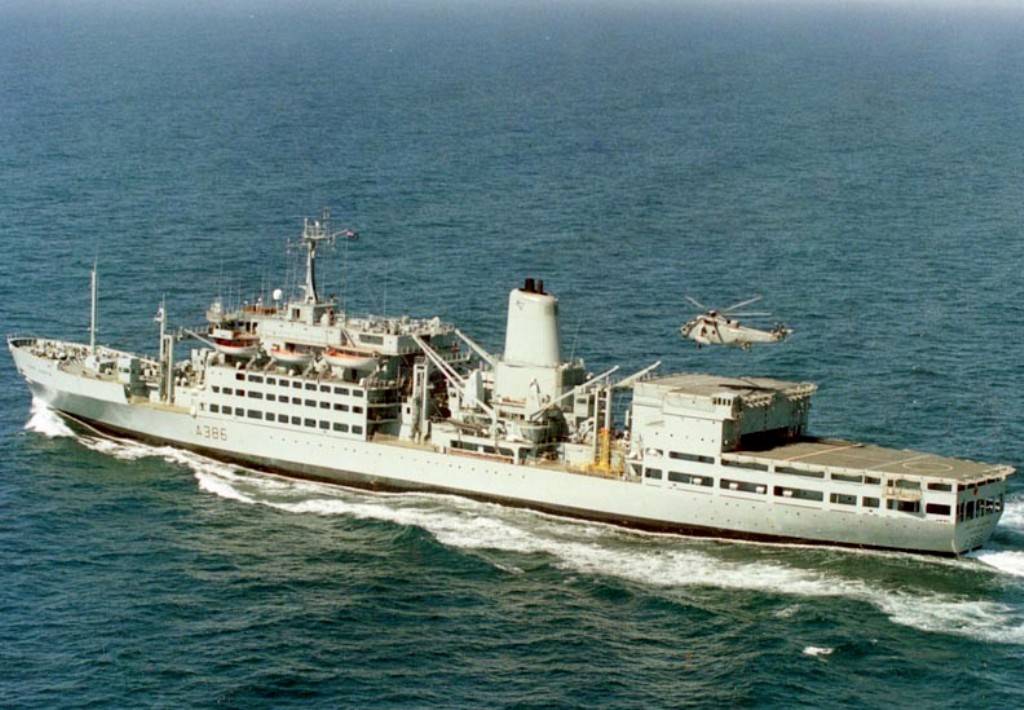
Resource Class AFS (or AEFS)
Designed as AFS for fleet replenishment, both of these ships were primarily used to replenish ammunition; although they could carry other dry goods, they had some temperature controlled holds but did not have bulk refrigeration. They could house helicopters but were not normally provided with an embarked air detachment.
| Pennant | Name | Status | Location |
|---|---|---|---|
| A480 | RFA Resource | Active in Med | Western Med supporting Illustrious |
| A486 | RFA Regent | Active in Persian Gulf | Bahrain |
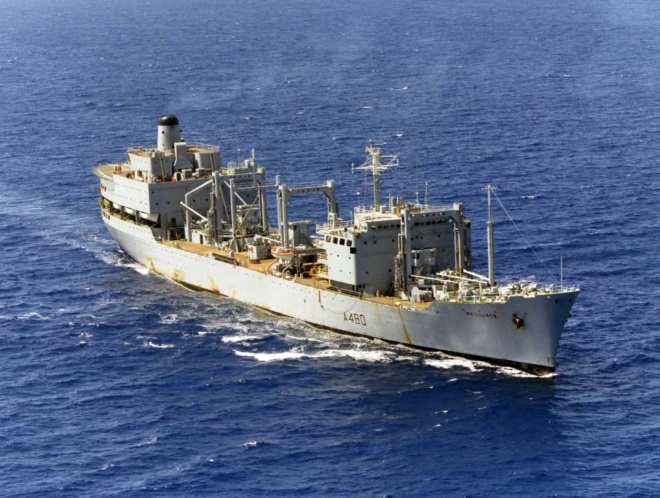
The three ships of this class are large ‘Fast Fleet Tankers’ (AO) and were designed to provide fuel to task forces at sea. They have a much larger liquid capacity than the Fort Victory class but only or very limited capacity to store dry goods. A fourth ship of this class was built and sold to Iran as the Kharg. Historically RFA Olmeda was scrapped in Jan 94 but she is retained in Northern Fury. They have a helicopter deck and hanger allowing them to house up to three Sea Kings.
| Pennant | Name | Status | Location |
|---|---|---|---|
| A122 | RFA Olwen | Active | Portsmouth |
| A123 | RFA Olna | Active in Med | Western Med supporting Illustrious |
| A124 | RFA Olmeda | Active | Glasgow |
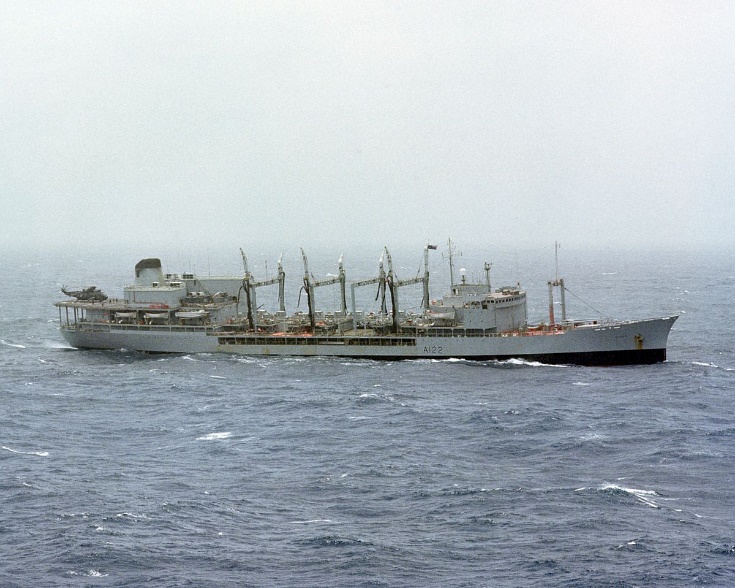
The Leaf class is not a class in itself but a collection of similar vessels charged with the same role. The main task of an AOT (Support Tanker) is delivery of bulk fuel between bases, but they do have capability to conduct RAS.
| Pennant | Name | Status | Location |
|---|---|---|---|
| A81 | RFA Brambleleaf | 40,200 tons | Returning from Gibraltar |
| A109 | RFA Bayleaf | 37,700 tons | Toulon, Mediterranean |
| A110 | RFA Orangeleaf | 33,750 tons | Bahrain, Persian Gulf |
| A111 | RFA Oakleaf | 50,000 tons | Near Manila, returning from Hong Kong |
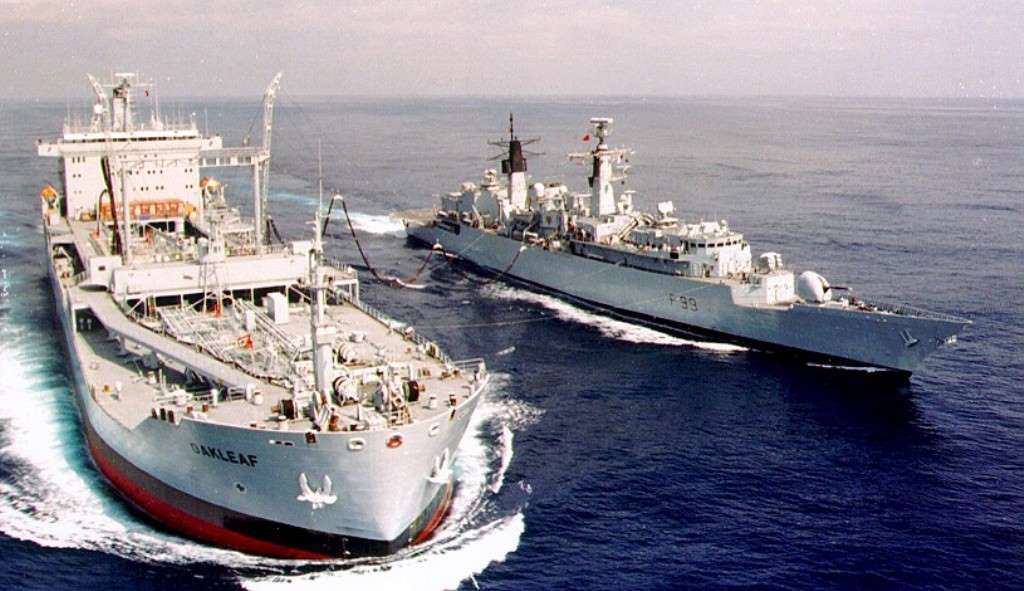
The AOL or ‘Small Fleet Tanker’ was a handy way of assisting RN ships on independent missions, while not tasking one of the larger replenishment ships. The five Rover class carried 3,000 m3 of fuel and limited dry and refrigerated goods. A landing platform is provided for VERTREP (Vertical Replenishment) but there is no provision for embarking a helicopter.
| Pennant | Name | Status | Location |
|---|---|---|---|
| A268 | RFA Green Rover | In Port under repair | Perth Australia |
| A269 | RFA Grey Rover | South Atlantic | Operating near the Falklands |
| A270 | RFA Blue Rover | Eastern Med | Operating near Cyprus |
| A271 | RFA Gold Rover | Atlantic | Returning to Portsmouth from Med |
| A273 | RFA Black Rover | Western Pacific | Operating near Brunei |

The Diligence (A132) is the RN’s forward repair ship (AR). Beginning her life supporting North Sea oil rigs, the Diligence was contracted by the RN for the Falklands war, then later purchased outright. During the Persian Gulf War, because of her machine shop and repair facilities, she assisted the USS Tripoli and Princeton after they were struck by mines in the Gulf War. She has many duties, including support of the RN’s Persian Gulf Mine countermeasures force, provisioning and repairing SSNs patrolling east of the Red Sea, responding to natural disasters and supporting other requirements. Her helicopter deck can land anything up to a CH-47 Chinook, her hull is reinforced to withstand severe ice so she can navigate in polar regions without icebreaker assistance and she has a ‘dynamic positioning’ system which keeps her stable and prevents drift in poor sea conditions. Currently she is in Perth Australia assisting the repair of RFA Green Rover after a major engine failure.
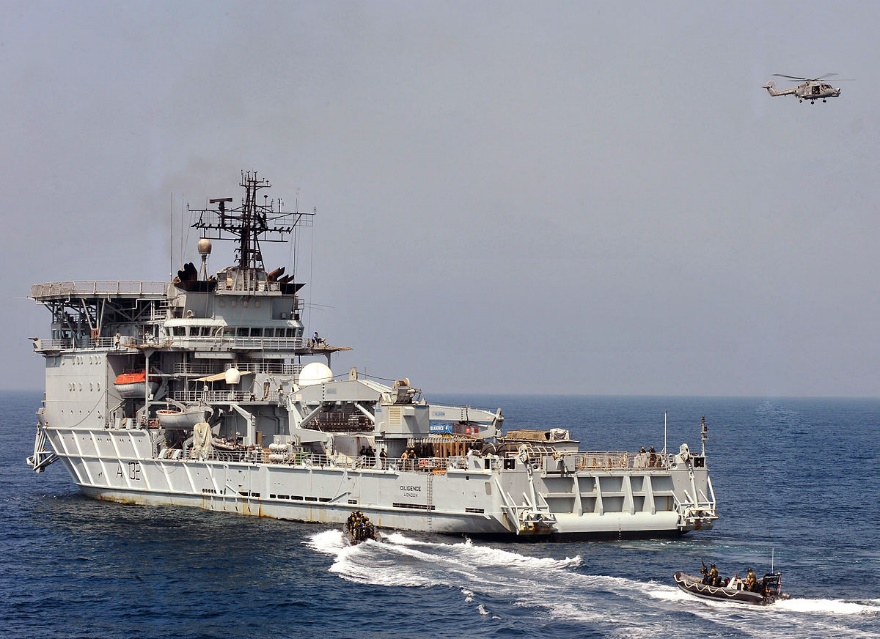
Although contracted for the Falklands as a container ship, the Argus (A135) was purchased in the late ‘80s as an Aviation Training Ship. Since then has also been used as amphibious support ship (unsatisfactorily) and a ‘Casualty Receiving Ship’, her armament and paint colour not allowing her to be called a Hospital ship. Her medical facilities are extensive and include CT-scan, Intensive Care Unit, surgery and a 70 bed holding ward. Her flight deck is configured to train pilots for landing both on the aircraft carriers and small deck ships, although she does not have a bow ramp needed to launch combat loaded Harriers. She is currently in port at Southampton.
